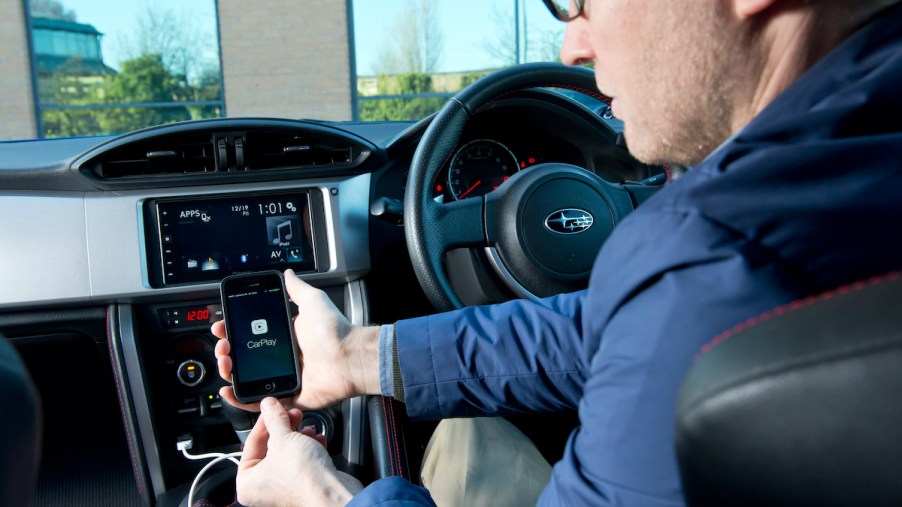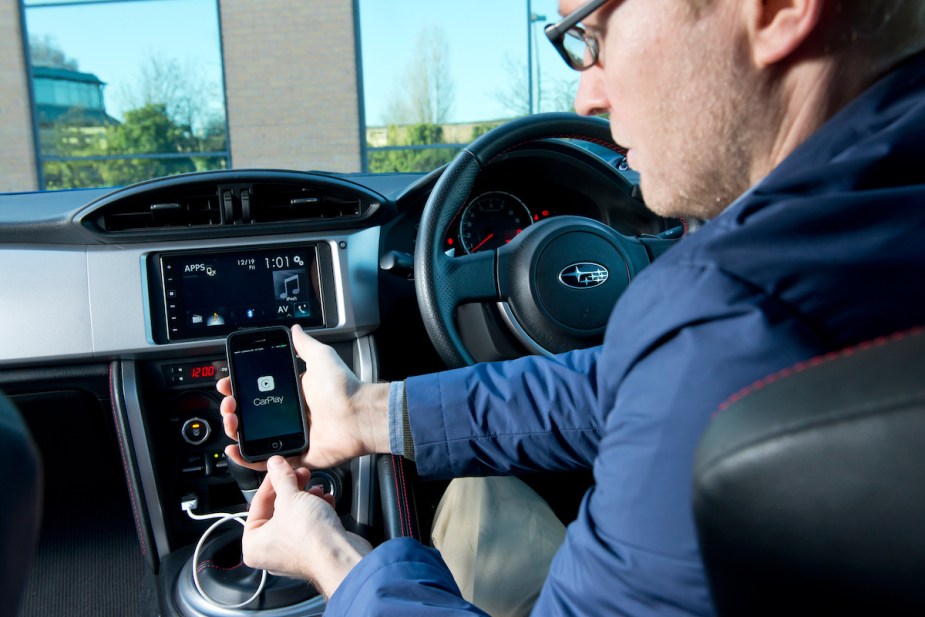
What Are the Downsides of Wireless Apple CarPlay Adapter?
Apple CarPlay has become a basic feature in the base trims of several modern vehicles. This smartphone integration program lets you mirror some apps on your car’s infotainment screen. Apple CarPlay has improved over the years and changed how drivers use roads. However, as with most technological advancements, there are inherent downsides to the wireless Apple CarPlay adapter. Read on to learn the disadvantages of wireless Apple CarPlay adapters.
Apple CarPlay lets you use your phone hands-free

When Apple introduced Apple CarPlay in 2014, it changed the game forever. Apple CarPlay changed how drivers enjoyed roads by giving motorists more connectivity without needing to use their hands to operate their phones.
Since its introduction, the technology has improved and allowed drivers to make and receive phone calls, enjoy their songs and podcasts, see more information about the weather, and navigate maps without taking their eyes off the road.
When the technology was introduced, manufacturers weren’t too quick to jump on it, as many didn’t see the need for it. However, as time passed, many automakers began realizing how necessary the integration was.
This was also heightened after a consumer shift with many buyers opting to purchase cars with Apple CarPlay, forcing manufacturers to not only integrate the tech into their vehicle’s infotainment system but also to ensure everything worked seamlessly.
The technology recently received a significant upgrade, with Apple announcing the iOS 16. The upgrade will effectively change how Apple CarPlay integrates with infotainment in years to come. The latest iOS ensures that the tech can work on every screen in the car, not the main infotainment display alone.
Users will now get increased functionality and integration as the tech will mirror your phone and let you handle various aspects of your car in real time. The upgrade will allow you to control heated seating, show the weather, navigation, display trim time and see the battery levels on your EV or hybrid.
What are the downsides of a wireless Apple CarPlay adapter?
Wireless Apple CarPlay lets you connect your phone to the car without plugging the two. This eliminates the need for a Lightning cable and ensures you charge your iPhone faster. But for all its good comes the bad. Like with most things wireless, there are several tradeoffs you’d be making by going wireless.
For instance, Apple hasn’t officially licensed the wireless CarPlay adapters, meaning reliability isn’t guaranteed. You may also find that some products work exceptionally well than others. According to Slash Gear, another issue is the initial pairing process between your phone and the adapter when you first turn on the car.
You may have to unplug the adapter, then plug it back in before it starts working. If you commute in a busy area, you may face some interference issues that may result in an unstable connection due to Wi-Fi issues in the car.
Some users on Reddit complained that they experienced some lagging when performing CarPlay actions. While the delay is barely noticeable (one or two seconds), some found it annoying.
What is the difference between Android Auto and Apple CarPlay?
Apple CarPlay and Android Auto essentially function the same, with the latter being for Android phones. However, in terms of Google Maps, Android Auto has its counterpart beat. This is because Google added the ‘pinch-and-zoom’ feature on Android Auto, which isn’t present on Apple CarPlay.
Additionally, you can customize the functionality and overall look of Android Auto through your phone, while Apple CarPlay’s interface isn’t easily customizable. Apple CarPlay has the advantage of UI thanks to its dashboard layout, which ensures efficient app navigation.


